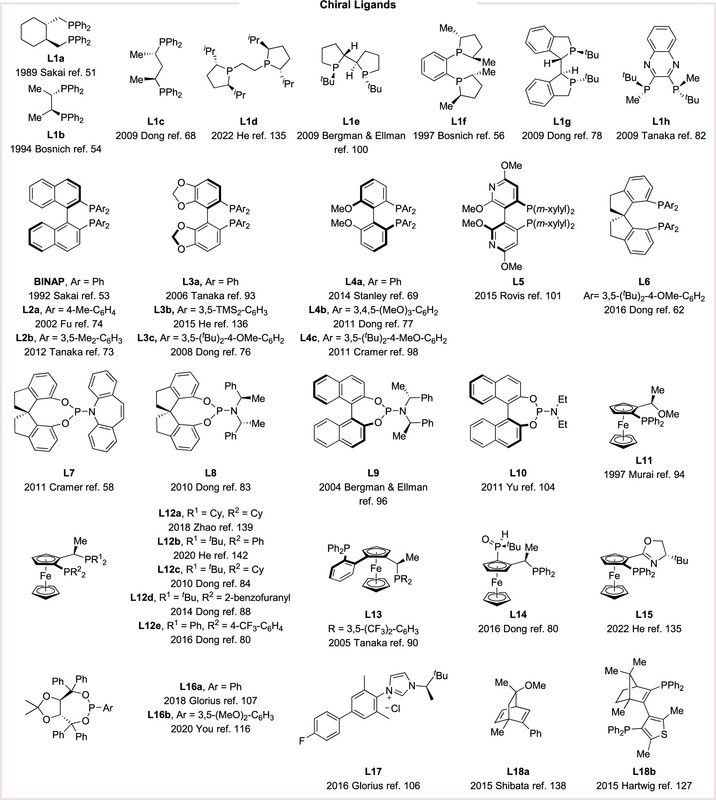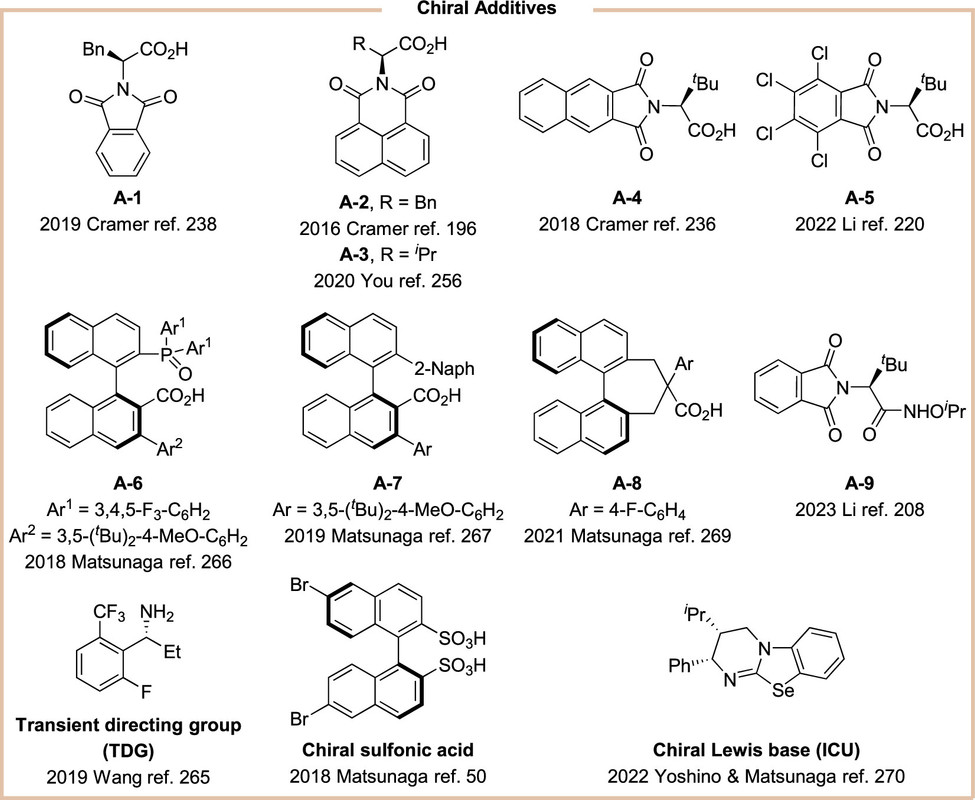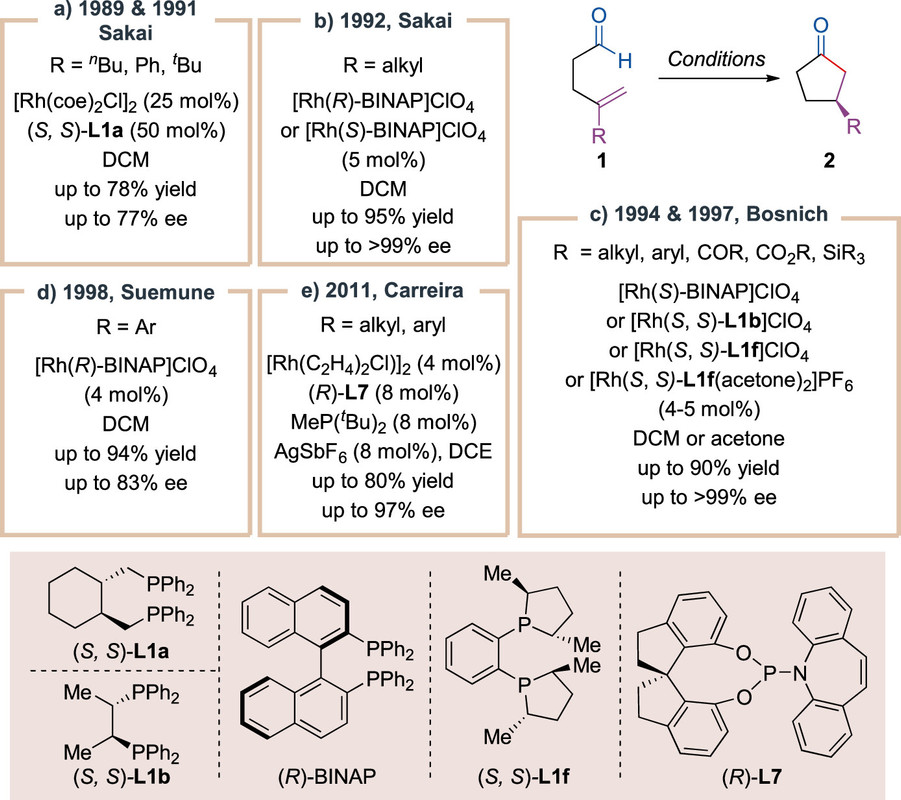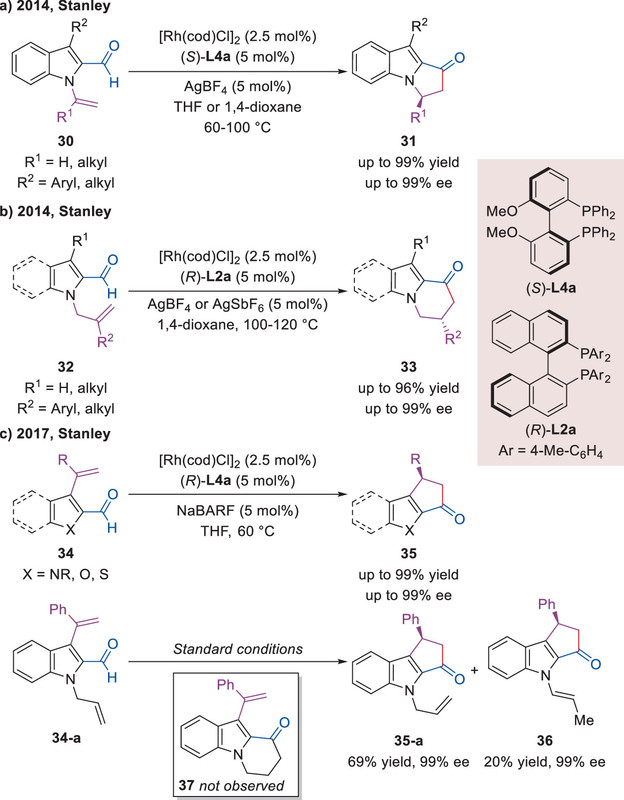Rhodium Catalysts for Asymmetric Synthesis, Looking at the Pictures.
This is a very, very, very esoteric post, and refers to a time very long ago in my life - my organic synthesis days are long over - but as it appeals to me in a sense of nostalgia, and because of my interest in used nuclear fuels - the supply of rhodium in used nuclear fuels is said to exceed that available from ores - I thought I'd post some pictures of asymmetric catalysts using the element. For some reason rhodium catalysts excel at forming asymmetric bonds - something I've known for a long time but never learned to explain. Asymmetry is a feature of the chemistry of life, and thus is very important in many biologically active compounds, including but not limited to medicinal chemistry.
The source for these pictures is this paper: Rhodium-Catalyzed Asymmetric C–H Functionalization Reactions Chen-Xu Liu, Si-Yong Yin, Fangnuo Zhao, Hui Yang, Zuolijun Feng, Qing Gu, and Shu-Li You Chemical Reviews 2023 123 (16), 10079-10134.
Note that the authors are Chinese. The orange slime mold in the White House is obviously working (if what he does can be called "work" ) to destroy American science and is likely to succeed at it, but science will survive elsewhere in humanity and build upon what America created before it collapsed here. China, I predict, will easily displace the United States as the scientific leader of the world.
An excerpt from the introduction:
Transition-metal-catalyzed coupling reactions offer unparalleled advantages for constructing carbon–carbon (C–C) and carbon–heteroatom (C–X) bonds. Among these, transition-metal-catalyzed asymmetric C–H functionalization reactions have provided powerful access to the synthesis of diverse enantioenriched compounds in a highly enantioselective manner. (1−8) Generally speaking, there are three different pathways for achieving asymmetric C–H functionalization reactions, desymmetrization, kinetic resolution, and the addition to unsaturated compounds (Scheme 1). Asymmetric C–H functionalization reactions can be catalyzed by various transition-metal complexes including palladium (Pd), (9−19) rhodium (Rh), (20−26) iridium (Ir), (27−30) ruthenium (Ru), (31−34) and other 3d transition metals. (35−38) Among these, Pd and Rh catalysts have received the most attention due to their applications in diverse enantioselective reactions with broad substrate scope.
When I was an organic synthetic chemist a long time ago, the way I'd decide whether to read a paper in full was to look at the pictures. That's all I can offer here, a look at the pictures.
Here we go:

The caption:
Figure 2. Chiral Ligands Used in Rh(I)-Catalyzed Asymmetric C–H Functionalization Reactions.

The caption:
Figure 3. Chiral Cyclopentadiene-Rh Catalysts Used in Rh(III)-Catalyzed Asymmetric C–H Functionalization Reactions.

The caption:
Figure 4. Chiral Additives Used in Rh(III)-Catalyzed Asymmetric C–H Functionalization Reactions.

The caption:
Scheme 2. Enantioselective Synthesis of 3-Substituted Cyclopentanones

The caption:
Scheme 4. Enantioselective Synthesis of Chiral Benzo-fused Ketones via Intramolecular Hydroacylation Reaction
A little bit of personal nostalgia that may or may not be of interests to some of the chemists I know to be at DU.
Have a nice weekend.




